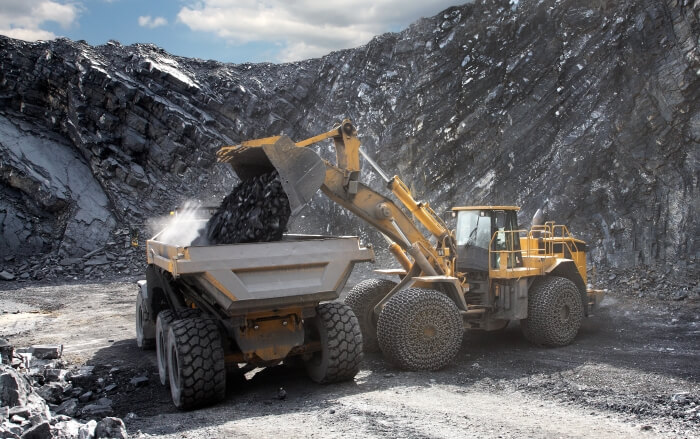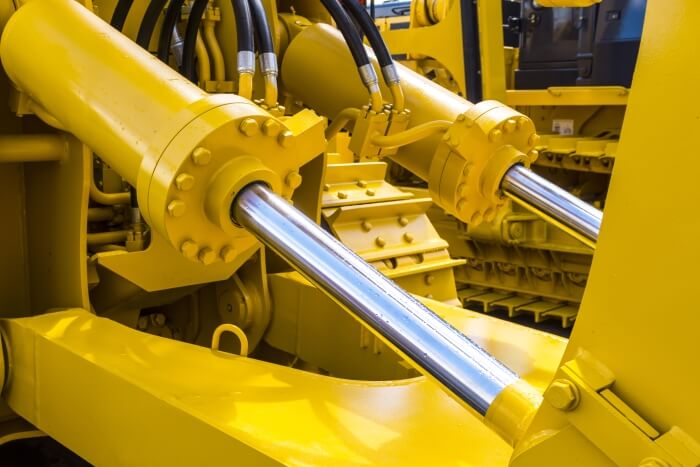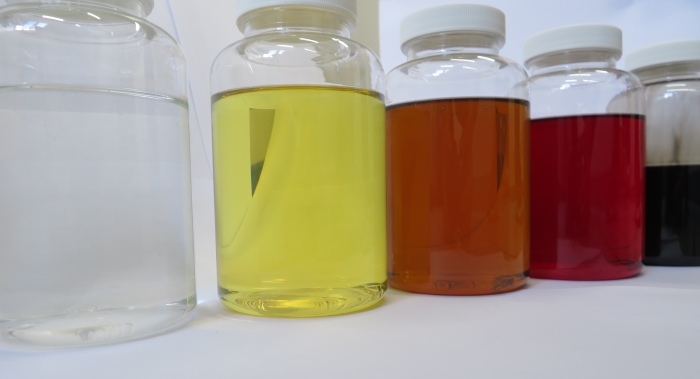


ADDINOL hydraulic oils for any application
ADDINOL hydraulic fluids are ideally suited for use in stationary and mobile facilities. They are also suitable for special operating conditions, e.g. in fire-prone facilities, ecologically sensitive areas or in the food industry. Their performance far exceeds the minimum requirements of DIN 51524. Thanks to the ideal combination of high-quality base oils and carefully selected additives, they master the challenges of modern facilities, such as compact designs with small oil volumes, high operating pressures, improved surface treatment and special temperature conditions. They offer reliable protection against wear and corrosion in all applications. In addition, many of the ADDINOL hydraulic oils are designed for energy efficiency.
Your benefits at a glance:
- outstanding air release properties with low foaming tendency
- very good demulsibility and good water separation ability
- excellent wear protection and very good aging behavior
- high thermal-oxidative stability
- improved corrosion protection
- high purity
- Excellent, personal service thanks to our Application Technology
Hydraulic oils by type/viscosity
If you already know which hydraulic oil with which characteristics meets your needs or the manufacturer's specifications, you can delve deeper into the subject matter with our pre-selection of the most important classes of hydraulic oils.
Information about hydraulic oil
Requirements | Differences | Viscosity | Colour | Mix hydraulic oilsRequirements on hydraulic oils in use
Whether agricultural equipment, tractors and wheel loaders, industrial applications such as presses or injection moulding machines, but also heavy truck tippers or municipal vehicles in road traffic, we encounter hydraulic systems everywhere in everyday life. The requirements for the use of hydraulic fluids are versatile and increase with the further development of the technologies applied. More compact designs, smaller oil volumes and special design features (e.g. smaller lubricating gaps) mean higher temperatures, pressures and loads for the lubricant used. In addition, the systems are often in operation around the clock and operators place high expectations on their efficiency. The quality of the lubricant used has an impact on the service life and productivity of the systems. Here, lubricants are demanded which meet the requirements perfectly and ensure the reliable operation of the systems at all times and with maximum efficiency.

Differences in hydraulic oils
The specifications defined in DIN 51524 represent the minimum requirements on hydraulic fluids. For most hydraulic systems, manufacturers specify fluids according to DIN 51524 Part 2 ”HLP“ or Part 3 ”HVLP“. The corresponding minimum requirements refer to demulsifying capacity, purity level, air release properties, biodegradability and filterability. In addition, compliance with the desired viscosity class and viscosity-temperature behaviour are important. Hydraulic oils are therefore composed of high-quality base oils and, depending on the application, varying additives.
| Hydraulic fluid | Description | Properties |
|---|---|---|
| HL | Against oxidation and corrosion | Improved corrosion protection |
| HLP | Against oxidation, corrosion + anti-wear additives | Ageing-stable, corrosion protection, operating temperature approx. -20 °C to + 80 °C |
| HVLP | Standardized to DIN 51524-3, VI is at least 140 | Better viscosity / temperature behaviour, application advantages at "limit" temperatures, fluctuating operating temperatures, operating temperature about -35 °C to + 120 °C |
| HLPD | Detergent and dispersant additives | Applicable for sensitive controls, prevents sludge formation, operating temperature approx. -20 °C to + 80 °C |
| HVLP D | Detergent and dispersant additives, VI is at least 140 | Prevents sludge formation, high viscosity index |
| Arctic Fluid | Good flowability at low temperatures | Special hydraulic oils for cold chambers, and very low outside temperatures |
| HEES | Not environmentally hazardous, high VI | Biodegradable ester-based hydraulic oils (saturated / unsaturated), resistant to ageing, temperature resistant |
| HV Eco Fluid | Standardized to DIN 51524-3, VI is at least 140 | Mineral oil based, very good VT behaviour, very well suited for external hydraulics, significant energy savings, less fuel, less CO2 |

Viscosity of hydraulic oils
In addition to reliable control of impurities of all kinds, the flow behaviour of hydraulic fluids during operation and above all at limit temperatures plays a decisive role. These properties are described by the viscosity index and influence the reliable lubrication of all components. The VI is calculated from the kinematic viscosity at 40 °C and 100 °C. A low VI value means a poorer oil penetration at low temperature and a high viscosity drop in the heat.
At cold start or outdoor use, the quick supply of all lubrication points must be ensured in order to guarantee the functioning of the system. If the flowability of the lubricant used is insufficient, fatigue and wear occur. This results in slow reaction times and increased energy consumption. Even at high temperatures, a stable lubricating film must be ensured; otherwise, wear and cavitation may occur. The high quality of the base oils used with a naturally high VI and additives ensures best response behaviour and maximum efficiency at all temperatures when using ADDINOL hydraulic oils.
The viscosity of hydraulic oils is not a quality feature. It is specified by the manufacturer anyway, depending on the application. For instance, there is the hydraulic oil HLP 46: HLP stands for the type of hydraulic oil, the 46 describes the kinematic viscosity (mm2/s) at 40 degrees Celsius. The viscosity is defined by the internal friction of a liquid. This is always temperature dependent. At low temperatures, the viscosity increases. At higher temperatures, the viscosity decreases.

Colour of hydraulic oil
The colour of the hydraulic oil is not an indicator of the quality of the product. Depending on the manufacturer, the fluids may be coloured green, red or blue. Many things are possible. However, this does not indicate whether the hydraulic oil is better or worse than another. Also, the colour of the oil does not determine its ageing or usefulness. Although the fluids can change their colour through ageing, they still do not allow any conclusions as to whether they still fulfill their requirements. The colour may also change due to the entry of water or dirt particles or be influenced by the diesel effect. If the colour of your hydraulic oil changes a lot, it's best to send it to the lab for analysis. There it can be determined with certainty, whether the oil has become unusable or can be used without hesitation. Examined components such as viscosity, degree of contamination, additive degradation or water content provide information about the further procedure.

Mix hydraulic oils
Not all hydraulic oils are miscible. You should avoid the mixing of oils with the following properties or compositions:
- Zinc-free and zinc-containing additive systems
- Detergent and non-detergent oils
- Base oils with glycols
- Different base oils (HFD, HEES, etc.)
To avoid mixing mistakes, it is best to maintain a lubrication schedule and always make a note of the oils you are using. When refilling, pay attention to the usability of the current product. Mixing two hydraulic oils that are incompatible by accident may significantly affect the functionality of the hydraulics. Damage to the material until total failure is inevitable as the oil does not lubricate properly anymore. In this case, drain the oil, clean the hydraulic system and fill with new oil.

Are you interested in our hydraulic oils? Find a sales partner near you.